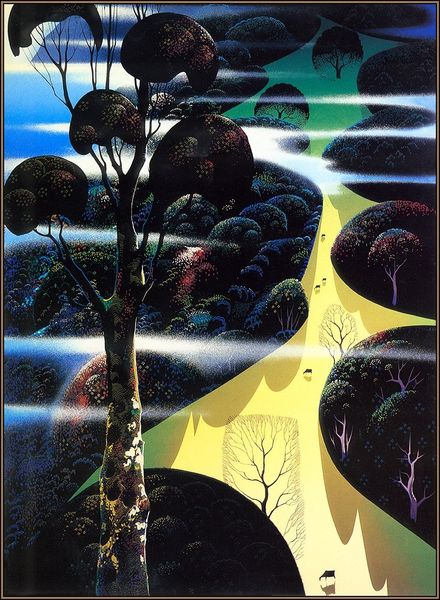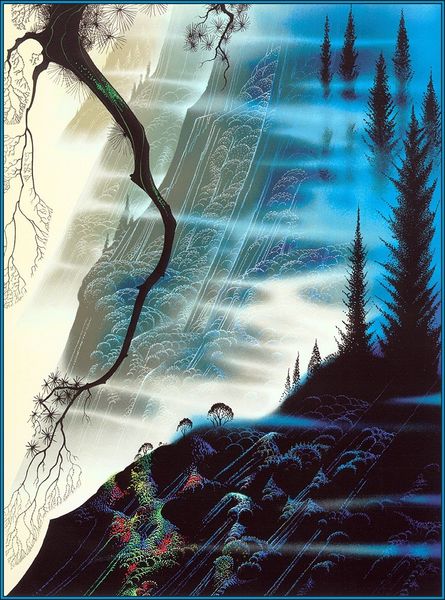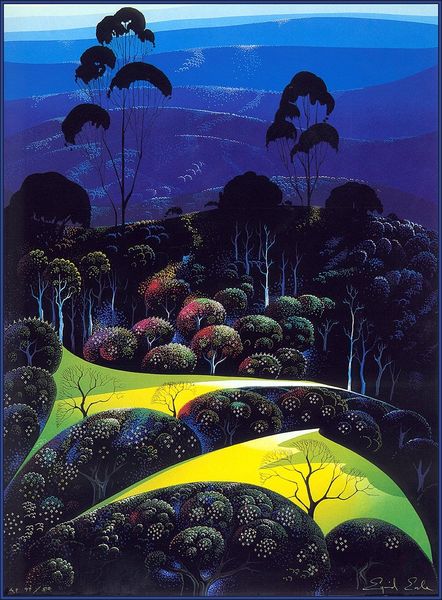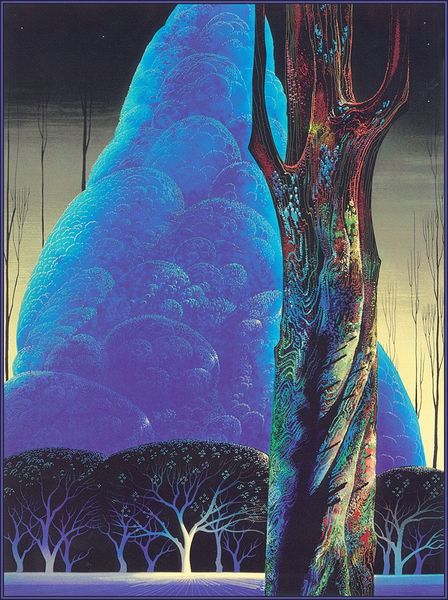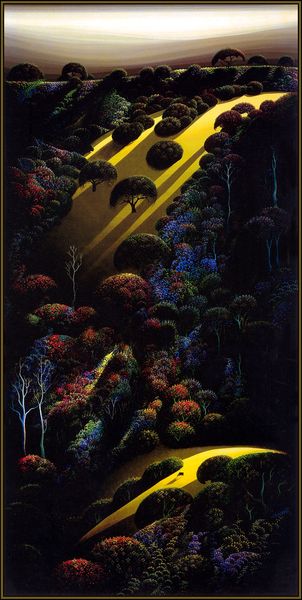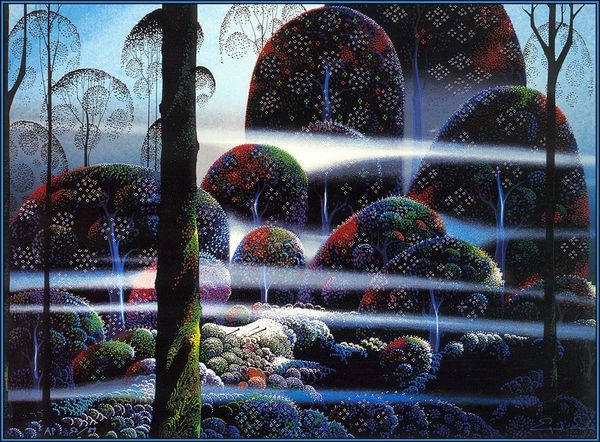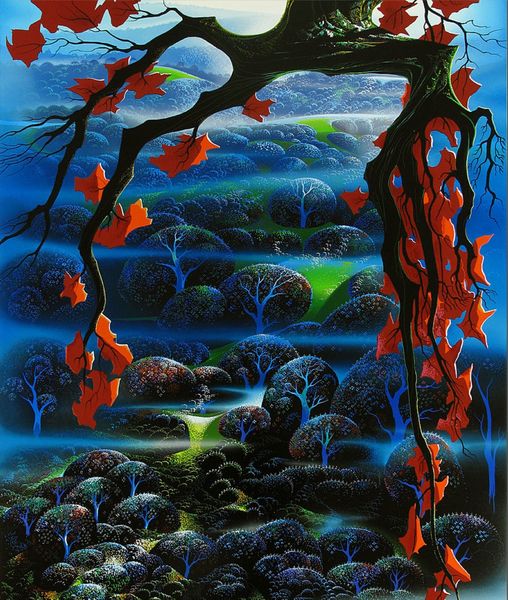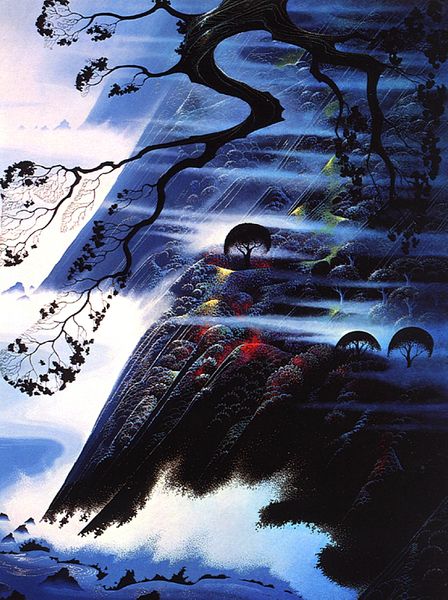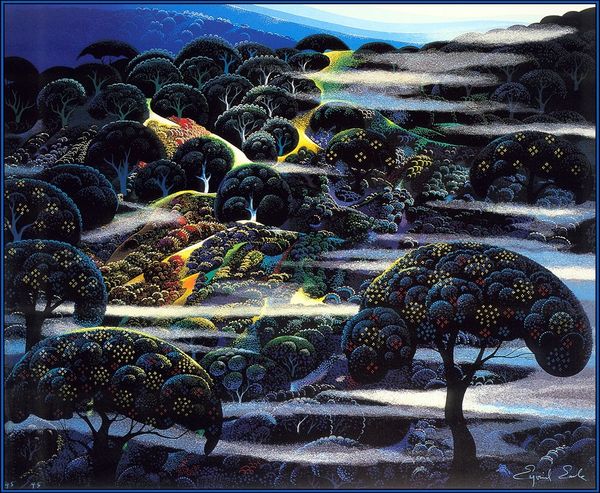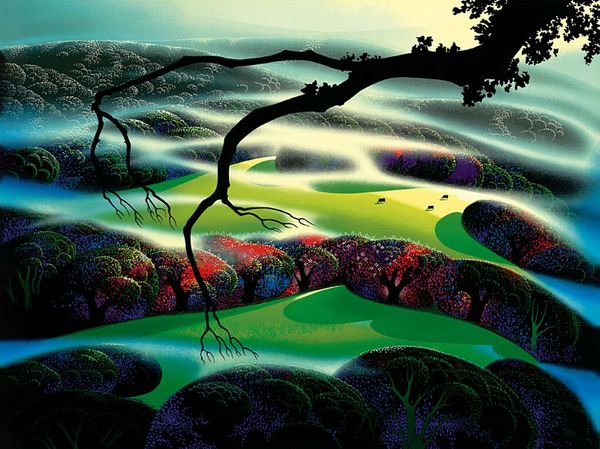
painting
#
sky
#
painting
#
landscape
#
geometric
#
naive art
#
nature
Copyright: Eyvind Earle,Fair Use
Curator: Eyvind Earle's "Toccata and Fugue" from 1992, a painting that immediately strikes you with its explosion of color and meticulously detailed landscape. What's your initial impression? Editor: It feels almost… hallucinatory. There's a strange tension between the vibrant colors and the slightly unsettling, almost rigid geometry of the forms. Like a fairy tale landscape viewed through a kaleidoscope. Curator: That tension, I think, speaks to the socio-political climate of the early 90s, when idealized landscapes began to be replaced with more introspective reflections. Earle, however, maintains a sense of beauty, but it is, as you say, unsettling. Editor: The geometric quality is really pronounced; almost every shape repeats itself to form bigger landscapes. It makes me think about fractals, like nature is building upon smaller motifs of its beauty endlessly... and that thick fog feels very intentional as a metaphor for mysteries or dreamworlds. Curator: Earle, having worked as a background artist for Disney, likely brought that training with idealized environments into his individual painting style, where stylized naturalism would eventually combine to form “Toccata and Fugue,” for example. These stylized trees and bushes also take from East Asian landscape painting and block printing methods, wouldn't you say? Editor: Yes, exactly. These symbols definitely represent Eastern art influences, like a harmonious and orderly interpretation of our relationship with the nature, almost like meditation through landscapes. Also, if "Toccata and Fugue" is inspired by the music forms, then there may be meaning for repetitive symbols. Curator: I completely agree. Music offers a narrative and order, as the landscape also presents a familiar idea through new formal methods. Thank you, it’s an invigorating work of art to consider. Editor: Agreed. A world brimming with patterns reflecting harmony.
Comments
No comments
Be the first to comment and join the conversation on the ultimate creative platform.
